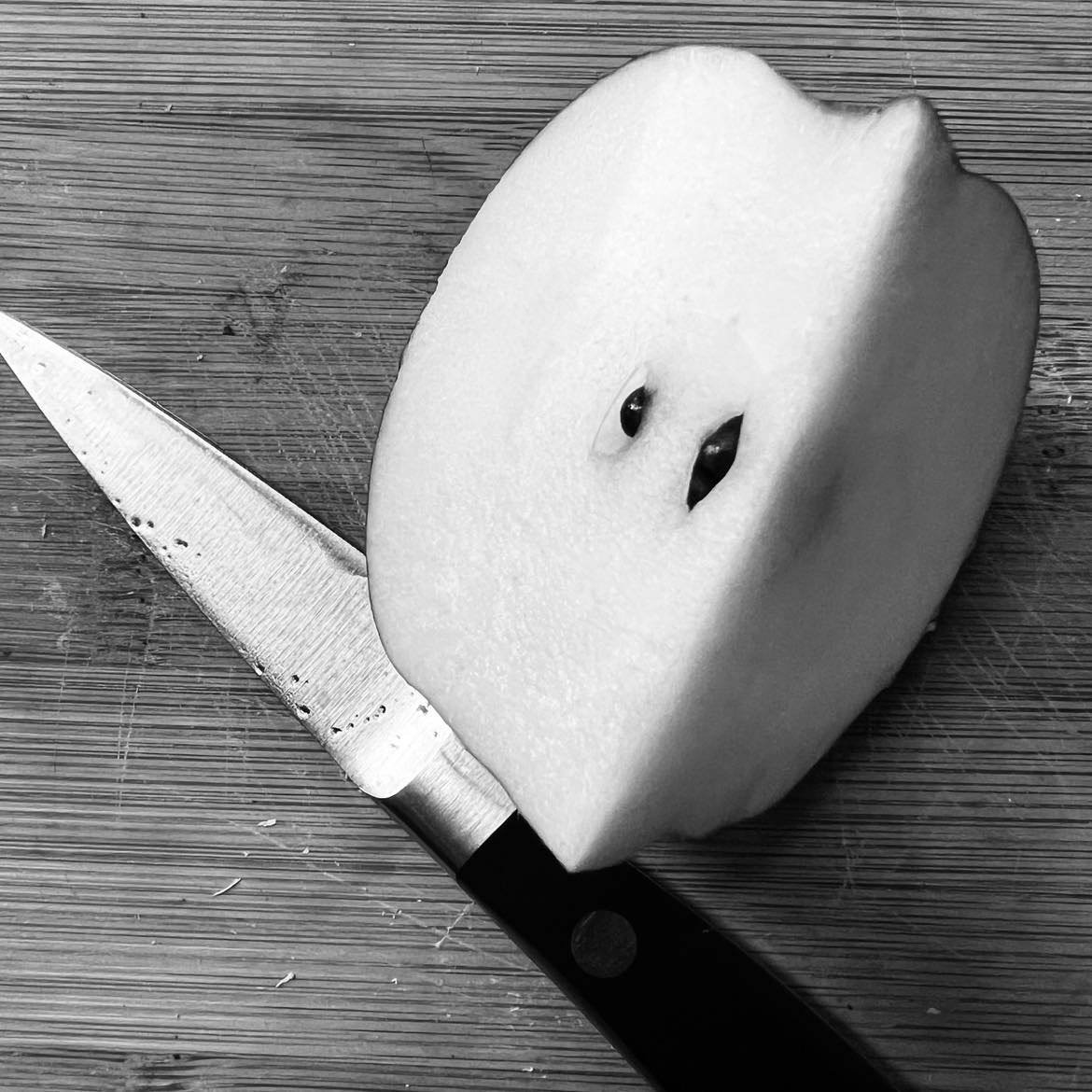We have four, poorly sited heirloom apple trees on the property and we can attest to the finicky nature of apple crops — generally poor sunlight, late frosts that damage the blossoms, the biennial nature of some varieties. The past two years have yielded almost no apples, but two trees were rather abundant this year, especially our "favorite" tree, the Lady Apple, also known as the Christmas Apple.
This year has been an interesting one for our Fameuse Apple. According to the “Out On A Limb” website, it is “…also called Snow, is one of the oldest North American varieties. Historians have speculated that the apple may have originated in France, although evidence suggests that it is more likely to have originated in French Canada sometime before 1700. By the 1700’s it was widespread in the Champlain Valley of Vermont, and it may have made its way to Maine via that route.”
How it got to Snob Hill was through a mail order catalog 15 years ago. Ours is a hit-or-miss kinda tree. This year was a hit, but a majority of the crop withered on the tree because it almost immediately began to go bad as soon as it was ripe. We couldn’t eat them fast enough. They hung for a remarkably long time, fermenting and looking like burgundy scrotums.
We had fun this week, using our long-poled apple picker to find a handful of still-good Fameusians.
Again from the website, “Like McIntosh, Fameuse is very susceptible to the disease, “scab”, a cosmetic blemish that can be removed by peeling and does not affect flavor. The apple’s other name – Snow- comes from its “snow white” flesh. It is really, really white. The 1865 Department of Agriculture yearbook summed it up: ‘Flesh-remarkably white, tender, juicy...deliciously pleasant, with a slight perfume... No orchard in the north can be counted as complete without this variety... It is just so good that everybody likes to eat of it; and when cooked, it is white, puffy and delicious.’”
We still have a small basketful of Lady Apples, with many more on the tree. Such is its nature. Who knows if it will bear next year, so we enjoy them when we can.
A final, interesting bit about the Snow Apple, “Here’s an 1889 recipe for something called Apple Snow that might be perfect to prepare using these apples: Pare and core tart, juicy apples; stew with just enough water to keep from burning; sweeten with white sugar; flavor with lemon, the juice is better than the extract; sift through a potato masher or beat it until light; eat with whipped cream.”
It’s easy to see why the Fameuse is also known as the Snow Apple. Like snow, they melt fast.
